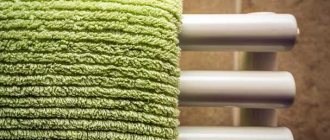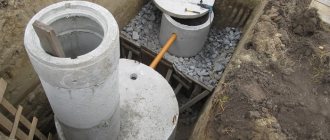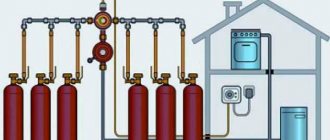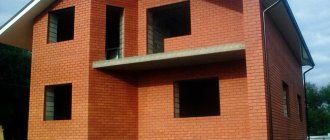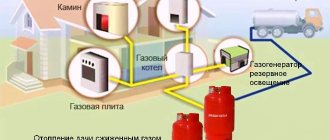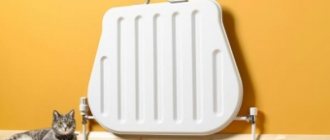Air heating allows you to heat several rooms from one stove. This is especially convenient and effective if the house has 2-3 floors. Among the advantages of such a heating system is its hidden installation: there is no need to install radiators, and the air ducts are hidden in the ceilings.
However, if you plan to heat your house by circulating hot air, you need to take into account a number of nuances, our article will help you understand them, appreciate this heating method and draw conclusions.
Air heating is distinguished by its efficiency in that it is possible to heat several rooms from one stove.
Calculation of an air heating system for do-it-yourself design and installation
The calculation is of great importance if you want the system to function smoothly, efficiently and last for decades.
If you do not plan your heating system correctly, you may fail, which will lead to unplanned expenses. So, what can happen if you don’t pay enough attention to the preparatory stage:
- The heater may overheat. The result is a breakdown.
- unexpected vibrations, and as a result, noise during system operation. The result is constant noise that most likely cannot be eliminated.
- drafts. The result is constant colds and colds.
Calculation parameters
Firstly, the power of the air heater. Depending on the quality of operation of the air heater, it will be clear how much area it can heat with air.
Secondly, feed speed. The faster the heated air is supplied to the intended places, the less heat loss will be.
Thirdly, the diameter of the air ducts. This indicator affects the calculation of the aerodynamic characteristics of the system as a whole. The diameter must be consistent with the flow rate, otherwise air will be lost in the duct, resulting in heat loss.
Electric heating boiler
An electric boiler is a convenient solution. The unit is usually small in size, with an attractive design, and requires virtually no maintenance.
The disadvantages of an electric boiler include its dependence on the electrical network. If the electricity regularly goes out or the voltage is not enough for the device to function properly, you will have to abandon the electric boiler.
Principle of operation
Many of our fellow citizens imagine a heating system as nothing more than a circuit of pipes and radiators filled with water or antifreeze. Meanwhile, the use of a coolant liquid in an autonomous heating system of a private house is nonsense, a vivid example of thoughtless adherence to established stereotypes. After all, we are building such a complex and expensive system only because centralized systems are designed on this principle.
At the same time, no one thinks that they operate in completely different conditions: the heating unit is located at a considerable distance from consumers (large heat losses), and the consumers themselves - public and residential buildings - have a very extensive distribution network. To convey heat to the most distant radiator, you need a coolant with a very high heat capacity, and water is best suited for this.
Schematic diagram of air heating
In an autonomous system, nothing like this is observed: the boiler room is located directly in the house, therefore there are no heat losses as such; in this case, the maximum distance to the most distant room usually does not exceed several tens of meters. In such conditions, the medium for the sake of heating everything is started, that is, air, can be used as a coolant.
The heat capacity of air is 800 times less than that of water, but it will be quite sufficient to distribute heat within the house.
This distribution is the principle of operation of the air heating system. The air is heated by a convection-tube furnace (common name - heater), running on gas, wood with coal or diesel fuel, and is distributed through a network of air ducts to all rooms. In each of them, you can set your own temperature regime by blocking part of the air duct outlet with a damper.
Application of air heating systems
But where can air heating systems be effectively used?
Firstly, at industrial enterprises due to the peculiarities of their work. In some places it is impossible to do without such a system, since others are not suitable.
Secondly, in areas where it is necessary to ensure the safety of children. For example, in kindergarten. Touching hot water radiators may cause burns.
Thirdly, to create an isolated air system in the house. This option is suitable for people suffering from allergies or lung diseases, especially if there are industrial emissions nearby.
However, today many enterprises prefer a hydraulic heating system, since it is cheaper and modern technologies have made it possible to apply solutions that can get rid of the shortcomings of older hydraulic systems.
Features of installation and operation
What features will you have to face if you decide to choose air heating for a private home?
First, you will need to place air ducts everywhere. For this purpose, you will have to order a separate architectural project in order to correctly fit them into the architectural appearance of the house and create convenience and comfort inside.
Placing air ducts under the ceiling and in the floor will require increasing the height of the house by about a meter. If they are not hidden, the air ducts will look unsightly and take away space that could be used for other needs.
Secondly, there is the problem of cleaning the air ducts. From time to time, dirt and dust will accumulate in them. And to remove them from there, you will need a whole system of hatches along the entire length of the air duct.
If you do not clean them, then after a while a creature called Staphylococcus aureus will begin to live in the accumulations of dust. Its presence in the air can lead to an allergic reaction.
It is useless to install any filters, since dust and dirt will still settle inside. There are special services for cleaning air ducts that also clean air conditioners.
Thirdly, the air heating system of a private house requires the placement of diffusers, that is, special fans that will rotate and create an air flow inside. They make a lot of noise and should not be placed near the bedroom. This also requires additional hassle, since a place needs to be prepared for the diffusers.
The fan diameter is most often 600 mm, but can be 400 mm.
When choosing diffusers, pay attention to the fan rotation speed. The faster it spins, the more air moves through the air heating system. . Fourthly, a competent and responsible approach to the installation of this system is required due to the complexity of the process
Finding a good ventilation specialist who will think through everything and make an effective working system is extremely difficult. And most specialists can make various mistakes. For example, improper air extraction from the room.
Fourthly, a competent and responsible approach to the installation of this system is required due to the complexity of the process. Finding a good ventilation specialist who will think through everything and make an effective working system is extremely difficult. And most specialists can make various mistakes. For example, improper air extraction from the room.
Fifthly, installation and maintenance of air heating can be 10 times higher than the cost of similar procedures in relation to water heating. After all, you need to spend money on an architectural project, increase the height of the house, regularly clean the air ducts, and so on. There are much more effective, cheaper and suitable options for private homeownership.
Help in choosing a heat generator and installation steps
Air ducts are usually ordered from special enterprises that produce such equipment. If you want to install an air conditioner, then it is necessary to insulate the supply air ducts. Condensation does not appear during thermal insulation. In order to install the main air duct, it is recommended to choose galvanized steel. It is covered with foil self-adhesive insulation with a thickness of about 5mm.
Assembly and insulation of air ducts during the construction phase of a house
In order to hide the air ducts, it is recommended to use the inter-ceiling space, which is located behind the suspended ceiling. There are 2 types of air ducts: rigid and flexible. They are selected for a specific type of air heater. Aluminum tape is used to connect several air ducts.
Air duct installation
Drafting
Like any other air heating system, it also needs a primary design, which for a private home can be done with your own hands. The design and calculations must take into account the following:
Gas heater device
- A heating boiler of appropriate power, which, taking into account heat losses, is capable of heating all rooms.
- The speed of movement of warm air masses.
- The amount of heat a building loses through walls, roof, floors, windows and doors.
- Aerodynamic characteristic, which depends on the cross-section of the air ducts, and is calculated to determine the reduction in air flow pressure.
Before you undertake a thermal engineering calculation, make sure that your knowledge is sufficient for this work, since an incorrectly done project can bring such phenomena as an eternal draft in residential premises, and this is fraught with colds, the constant noise of a working fan and vibration, which will invariably be created in air ducts. And overheating of the heat exchanger can lead to failure of the heating unit itself.
Air heating of a private house involves a ventilation device to replenish the internal space with fresh air and remove exhaust air.
When making thermal engineering calculations, it should be taken into account that the ventilation system supplies about 25% of cooled air from outside to the room.
After the calculations have been carried out, you need to select the location for installing the air ducts. As previously mentioned, they can be located under the ceiling or made in a baseboard design. There are no rules or regulations here. Everyone is free to choose what suits them best. In any case, the air duct sleeves should be located both at the bottom and at the top. Since air masses must circulate, covering the entire space of the room. It is recommended that the outlets of the channels supplying warm air be located where people are most often and for the longest time.
Service: main features
To keep the number of breakdowns to a minimum during its service life, it is necessary to provide the system with timely maintenance. The frequency of the procedure depends on its complexity, intensity of use, and other factors.
It is better to trust the service to professionals Source seaside-home.ru
Air heating of a country house requires the following regular actions:
- Visual inspection of equipment, diagnostics of individual components.
- Cleaning and replacing filters , cleaning and replacing the humidifier pad, cleaning the heat exchanger.
- Automation check.
Timely maintenance will avoid power loss, equipment breakdowns, and repairs. Some work can be carried out independently, for example, replacing and cleaning the filter or cleaning the heat exchanger. Other work requires qualifications and it is better to leave them to specialized companies.
How to make air heating in a private house with your own hands
Design and calculation of an air heating system
Before installing air heating with your own hands, you need to think through its layout and design for a specific private home. To do this, an approximate design of such a system is drawn up on paper.
Then, depending on the heating requirements in a particular building, parameters such as:
- intensity of heated air injection;
- optimal power of the heat-generating installation to heat a room of the corresponding area to the required temperature;
- air duct cross-section;
- aerodynamic features;
- volume of heat loss on room surfaces.
It is advisable to agree on a preliminary scheme with a full set of components that meets all requirements with a specialist in order to avoid any errors or omissions that could lead to drafts, noise or vibration in the room.
Professionals can also help you choose the optimal heat generator model so that it provides a comfortable temperature and does not overheat.
It is best to install the equipment in a separate, pre-designated room.
Air heating systems
Air heating structures come in several types depending on their parameters.
According to air circulation they are:
- with the natural flow of air masses;
- with forced air movement under the influence of pressure created by a fan.
By size and scale:
- local, designed for heating one or two rooms in a small private house;
- central - for heating multi-storey buildings and large warehouse or factory hangars.
According to the heat exchange implementation scheme:
- supply air, which draws street air into the room and heats it;
- recirculation, that is, the same air moves, cooling and heating inside the room;
- with combined recirculation, when indoor air and fresh air from the street are combined.
By location in the room:
- hanging;
- floor units.
- Selecting a heat generator.
The source of thermal energy is always the heart of the entire heating system, therefore, the comfortable temperature of the premises of a private house depends on its type, power and design. There are two types of heat generators: mobile and stationary.
The first are represented by gas mobile heat generators, which are distinguished by their large dimensions. They are used to heat large industrial premises, for example, factory floors.
The latter have an isolated combustion chamber and are intended for installation in special rooms with a smoke exhaust system. They are produced by manufacturers in two versions: as floor-mounted or suspended equipment. The second type of design is called heater, that is, it performs the function of heating only one room.
They are installed in country cottages, since such a device can warm up a small rear area in just a few hours.
The suspended structure is compact and produces minimal noise during operation. It is made from materials that do not conduct heat well, so it is safe to use even next to wooden walls.
The floor-mounted unit is much more powerful and larger, so it can be used to heat even a wooden cottage with several floors.
Air source heat pumps for heating
Today, the use of heat pumps instead of boilers as heat sources in the house is becoming increasingly important. The cost of such installations that extract thermal energy from the environment is becoming more affordable, although it is still very far from ideal.
The principle of this kind of heating devices is similar to the operation of split heating systems. Air having a temperature above absolute zero, in any case, has thermal energy, which such a pump takes away from it, making it even colder outside.
The heat thus obtained is transferred to the internal air of the room, distributed over its entire area.
This is a fairly efficient system because the electricity costs for operating the fans and compressor are only 1/3 of the heat obtained from the air. Therefore, a heat pump is one of the best options for heating a private home, although it is the most expensive.
Installation equipment
Personal installation of an air heating system in a private house requires the purchase of the equipment included in it: air ducts or tin pipes, a heat generator unit, a fan, hoses for taking in outside air and decorative grilles.
Installation nuances
Even if the project is completed in full compliance with GOST requirements and developed by professionals, it is not advisable to install the system yourself, since this is a very difficult process. However, you should know its features in any case:
- The cross-section of the air ducts can be round, rectangular or square; the choice depends on the characteristics of the room and the project itself.
- Air ducts are most often made of galvanized steel sheet : it is lightweight, does not deform and is not afraid of corrosion.
- Fastening of air ducts is possible inside walls, in ceilings, under the ceiling . If necessary, they are masked with decorative panels: this allows you to create an attractive room design without fear that communications elements will spoil the interior.
The components of the air heating system do not spoil the interior Source indivi-dom.ru
Note! During the circulation of air flows, the system produces noise, and to reduce it, installation of a soundproofing layer will be required. The materials used for this often serve as a heat insulator.
When installing a system with forced circulation, the device is connected to a heat source and an electrical network; you can also use an emergency power source in case of a sudden power outage.
It is also important to choose filters for heating: they can be mechanical, electrostatic and carbon. The first type is used to retain dust particles and dirt, the second is used for finer cleaning, and the third is used to eliminate unpleasant odors. These elements most often require replacement; they usually need to be changed every 2-3 seasons if the building is used for temporary residence, or at least once every six months for permanent use.
Types of air heating
The use of hot air to heat rooms has been known to people since ancient times. During excavations in Pompeii, “preserved” by the ashes of Vesuvius, walls and foundations of buildings were found, the design of which clearly indicated the use of “hypocausts” - ancient centralized air heating systems.
With the fall of Rome, air heating was forgotten in Europe for many centuries, like many other things that were the legacy of the Empire. The second birth of centralized heating systems occurred in the 14th and 15th centuries. It is curious that heating the walls and floors with warm air was used to heat the chambers of the Moscow Kremlin long before such a heating method was remembered in Western Europe. Surprised foreign ambassadors told their fellow countrymen about the Moscow wonder, and for some time central air heating in Europe was called ... “Russian heating.”
Air heating became widespread in modern times, when the industrial revolution moved large masses of people to cities. It was this type that was used for the first central heating of apartment buildings in London, the then industrial capital of the world.
Direct-flow heating system
The basic design of the first air heating systems was quite simple. In the lower part of the building, usually in the basement, the air was heated by burning wood, charcoal or coal. The heated air rose by gravity through cavities in the floor and walls, and came out through special outlet openings on the roof. The air inside the room was heated indirectly - from the floors and walls heated by hot air.
Scheme of the Roman hypocaust
The effectiveness of such a system, called direct-flow, was very modest, b o
The majority of the energy was spent on heating the entire depth of the walls and floor, as well as on “heating the street” - still hot air was thrown out through the outlet openings. It was impossible to avoid this: it was the temperature difference in the system and outside that created the draft, due to which the air moved.
Recirculation heating system
The revolution in air heating was made by the use of a new type of fuel - natural gas. Heating the air with cleaner fuel, coupled with the advent of advanced air filters, made it possible to pump heated air directly into the room, thus creating a closed cycle of air circulation in the room.
Air heated by gas or electric heaters rises through air ducts and is supplied to the upper part of the building. Giving off heat, the air cools down and, gradually being replaced by new masses of heated air, falls down, again falling into the heater.
Recirculating air heating system
This recirculation heating scheme is called gravity, because air circulation is carried out without the use of any special devices only due to gravity.
If the building structure prevents the free circulation of air, a recirculation scheme with forced ventilation is used. In this case, hot air is pumped into the premises and taken into the heater using special fans.
Heating a building with air recirculation is the simplest and most inexpensive option, which is ideal for use in non-residential premises, workshops, and warehouses. The fact is that repeated passage of air through the heating system negatively affects its quality. Air heating of a private house or apartment using a recirculation scheme requires additional costs for humidification and ionization of the air.
Therefore, to heat residential premises, recirculation with a partial influx of outside air is more often used. With this scheme, the “exhaust” air is gradually removed outside with its gradual replacement with fresh air.
Recirculation with partial supply of outside air
There are also various combined air-water or air-oil heating schemes, which are mainly used for central heating of several buildings. The coolant carries energy from the central boiler room to the buildings, where a powerful radiator plays the role of a heating element in the air heating system.
How does this system work?
Air heating is very practical. Happy owners who heat their homes in this way note undeniable advantages:
- Absolute safety. Highly sensitive automation clearly controls all processes. At the slightest threat of leakage or other danger, it instantly blocks the equipment. In addition, there are no pipes filled with coolant in the system, therefore, in principle, their ruptures, leaks, etc. are impossible. troubles.
- High heating speed. It takes from 20 to 40 minutes to completely warm up the room, even if the initial temperature in the house was negative.
- Economical. Low energy consumption, high efficiency and the absence of intermediate coolants make air heating of a private home extremely profitable.
- Reliability and durability. Subject to proper design, installation, regular maintenance and necessary repairs, the system will last at least 20 years.
- Easy to use. Automatic control of the processes of starting, stopping and changing modes allows you to easily regulate the temperature in the house and at the same time protects against possible errors.
- Affordable installation cost and fairly quick return on investment.
- Aesthetics. The absence of conventional radiators in the room makes it possible to install windows of almost any size, frees up space and opens up opportunities for design experiments.
Traditionally, air heating systems involve the use of a heat generator. The air pumped into the heat exchanger warms up to 45-60° and, moving through the air ducts, heats the room. The cooled air is returned to the heat generator through grates in the floor or through return air ducts.
The main parts of the heat generator are the heat exchanger and the air-directing fan
Air heating can be done using several options:
- heat pump;
- gas burner using both bottled and main gas;
- hot water from a centralized boiler room;
- diesel burner.
The average air flow in the system is from 1,000 to 3,800 cubic meters. m per hour, the pressure is 150 Pa. In large rooms, heat loss may occur from long air ducts. In such cases, it is worth thinking about installing several heat generators that operate without air ducts. According to experts, the length of the main air duct should not be more than 30, and the branches - 15 m.
Using the system exclusively for heating rooms is somewhat irrational, so most often an air cooling unit is introduced into the device, from which an external air conditioning unit is diverted. Thus, the system combines heating and air conditioning, allowing you to maintain a comfortable temperature in the house at any time of the year. In addition, you can use additional equipment: a humidifier and an air sterilizer, creating a unique healthy microclimate in the rooms.
You can arrange air heating for your cottage using:
- Natural ventilation. The simplest option is when the air rises due to initial heating. It enters the rooms through air ducts, heats them and returns to the heat exchanger. The main disadvantages of natural ventilation are clearly manifested in the case of additional cool air entering through doors or windows. In this case, cold air, of which there is more, accumulates in the lower part of the room, creating a temperature imbalance and interfering with the normal functioning of the system.
- Forced ventilation. Air circulation is provided by a fan that creates pressure in the system. The room warms up much faster due to the higher speed of air movement. Also, in devices with forced ventilation it is easier to regulate the temperature in the rooms. A minor design flaw may be the noise coming from the air ducts.
Furnace-heater Miracle
Such a heating device provides high-quality heating for premises of any purpose for a long time, while little fuel is wasted.
Device
This device is an all-welded steel structure. The transfer sheet divides the combustion chamber into two compartments. The top contains nozzles and an injector. At the bottom there is smoldering fuel.
The heater is covered with a special steel casing: it reduces the heating temperature of the walls of the device and allows the heat to escape evenly. Thanks to this element, it is impossible to get burned on the stove.
Principle of operation
The process of gas generation is the smoldering of fuel with minimal access to oxygen. Re-burning of the gas occurs using special nozzles.
Such a device can be heated with firewood, garbage, dry manure, and peat. One load of fuel material provides the structure with continuous operation for 6-8 hours.
Application area
The “Miracle” stove-heater can be used for heating summer cottages, large cottages, industrial buildings, outbuildings, garages, and greenhouses.
Advantages
Such a heating device begins heating immediately after kindling. Warmth will come to the house in about 20-30 minutes. In addition, its advantages include independence from gas, oil, electricity, uniform heating of the entire room, work with any type of fuel (with the exception of coal), and high efficiency.
The Miracle oven is an economical and easy-to-use device that does not require special maintenance or care. Its combustion process can be controlled. Installation of such equipment will be inexpensive. You can cook food and heat water on it.
Advantages and disadvantages of air heating
When arranging such heating in a separate house, there are advantages and disadvantages. Its advantages are such features as:
- high efficiency, in some cases exceeding 90%;
- not burdened with a large number of complex, expensive and heavy parts such as radiators and steel pipes;
- you can set optimal microclimate conditions for each room;
- almost instantaneous response to temperature control;
- due to the fact that the fans are compatible even with solid fuel stoves, you can heat absolutely all rooms of the house without restrictions;
- a filter system along the path of circulating air, cleans it of allergens, dust and other particles;
- a humidifying filter built into the design;
- in the summer, with forced air circulation and the heat generator turned off, it works as a powerful cooling system;
This heating design does not pretend to be perfect, as it also has disadvantages:
- this heating method must be provided for by the design of the house during its construction;
- its installation is relatively complicated;
- needs regular maintenance;
- difficult to modernize;
- this heating method makes it necessary to take care of the cleanliness of the filters and regulate the saturation of the atmosphere with moisture;
- needs a backup source of electricity to operate efficiently during interruptions in its supply from the main network.
How to perform a preliminary calculation
In fact, it is very difficult to independently calculate air heating. Often only specialists can do this. The calculation determines:
- heat losses for each room in a heated house;
- type of heater and its power, which should be comparable to the amount of heat loss;
- the required amount of heated air, taking into account the heater power;
- required diameter of air channels;
- pressure loss in the air installation, etc.
The right decision would be to order an example of calculating air heating at home from specialists. It is likely that as a result, engineers will offer several options; all that remains is to choose the most acceptable one.
Heating with air is economical, safe, extremely easy to use and at the same time durable and reliable. It is not surprising that it is gaining more and more popularity. However, it is quite difficult to arrange air heating with your own hands. Possible errors can lead to unpleasant consequences in the form of drafts in rooms, noise, overheating of equipment, etc. Those who choose this practical system should seek help from professionals. A well-designed and high-quality installed system will provide warmth in your home for decades.
Air heating is actually an ancient thing. And it goes without saying that, again, Europe and America are ahead of the rest. Because it's not like that! After all, an ordinary Russian stove is also one of the options for air heating! How many villages are there in Russia where they still use this heating method? There are enough of them! And yes, I would not classify such a stove as environmentally friendly. Still, when burning fuel - whether wood or gas - it harms our planet. But air heating can be done completely without harm to nature. After all, you can use the energy of the sun! This idea is not so new anymore, and there are even people who brought it to life!
Video description
In this video we will discuss whether it is possible to install air heating yourself:
To ensure that the procedure is successful and quick, it is recommended to order regular inspections of the system from a trusted company. Many users enter into a service contract with one company, and specialists perform work every season or at other established intervals.
A properly designed and maintained system will last a long time Source remlandia.ru
See also: Catalog of companies that specialize in designing country houses

